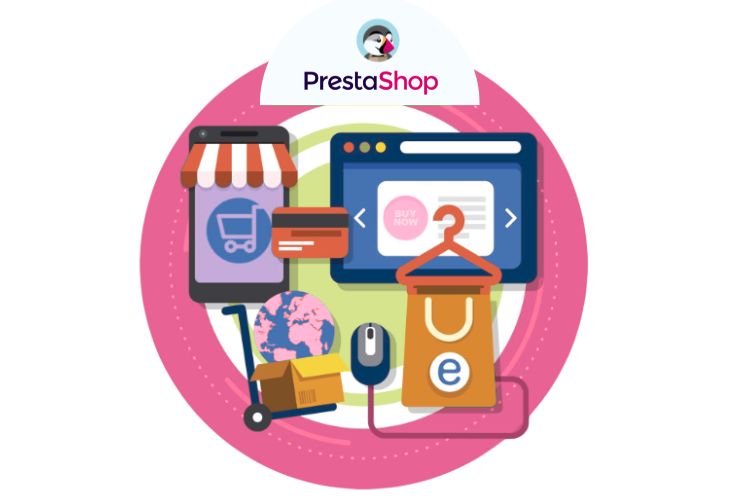Data is the king in today’s competitive e-commerce environment. One of the leading open-source e-commerce platforms, PrestaShop has robust analytics features that help you track, analyze, and optimize each function of your online store. If you use the data insights from PrestaShop to its best, you can thereby make sound decisions that can attract higher conversion rates, increased satisfaction levels of customers, and ultimately facilitate business growth.
In this article, we’ll explore how to use PrestaShop analytics to unlock the full potential of your online store and drive growth.
1. Why Analytics Are Important to ECommerce Success
Naturally, things have evolved. Business decisions today are no longer based on intuition or guesses but on data facts. Analytics provide you with a clear picture of customer activity, your store’s performance, and the success of your marketing. Points of such data truly identify areas that must be corrected and streamline strategies for a better outcome.
For PrestaShop shop owners, data analytics offer useful insights into traffic behaviors, customer demographics, buying habits, and conversion rates. By tapping into this data, you are able to streamline the customer journey, enhance marketing efforts, and increase sales.
2. Making the Most of PrestaShop’s Built-in Analytics Tools
PrestaShop includes a few built-in features that enable you to analyze your e-commerce operation. Some of the most important features include:
Traffic Analysis: With PrestaShop traffic analysis features, it is possible to know how many visits a site has, where the visit is coming from, and how many page views are being generated. This allows you to know which marketing resources bring the most visitors to your store, which could include organic searches, paid advertising, social media, etc.
Sales Analytics: PrestaShop sales reports give you informative data on which of your items are best sellers, sales trends, and revenues. You can break this down further into different aspects of product category, customer segments, or geography to see what sells most.
Customer Insights: By following the behavior of the customers, PrestaShop enables you to understand your customers. You can identify who are your most active customers, follow the purchase behavior, and detect the repeat buyers. This enables you to personalize your marketing and design more targeted promotions for your customers.
Conversion Rates: Your conversion rates are going to inform you as to whether your site is doing well at converting visitors into paying customers. Your PrestaShop analytics will enable you to glimpse where you may be losing the potential buyers, i.e., checkout, and make changes for higher conversions.
3. Leveraging PrestaShop Analytics to Have More Effective Marketing Strategies
With PrestaShop’s analytics tool, you can optimize your marketing campaigns in the following ways:
Track Campaign Performance: PrestaShop allows you to track the performance of your marketing campaigns in real-time. You can track the performance of email campaigns, social media campaigns, paid search campaigns, etc. By tracking metrics like click-through rates (CTR), return on investment (ROI), and conversion rates, you can optimize your campaigns for better performance.
4. Optimizing Product Listings with Data Insights
PrestaShop’s analytics also help you optimize your product listings to maximize visibility and sales. For example:
Best-Selling Products: Use data to find your best-selling products. Once you know what products generate the most revenue, you can better market them, highlight them on the front page, and optimize product images and descriptions so that they appear more appealing to customers.
Underperforming Products: PrestaShop analytics can also point out underperforming products. You may compare why some products are not selling as well as predicted and make changes by considering that you may need to revise the product descriptions, update pictures, or execute targeted promotions for increased sales.
Stock Management: With PrestaShop, you can track your stock levels in real time. Monitoring of stock levels will allow you to prevent overstock or stockouts of bestsellers. Having current inventory data will allow you to control product availability and reduce lost sales.
5. Data-Driven Customer Experience Improvement
Customer satisfaction is a vast area of online business success. Analytics in PrestaShop provide you with the functionality to enhance your customer experience and build lasting relationships with customers.
Identify Pain Points: Using a review of customer activity and feedback, a review of pain points in the customer experience can be done. For instance, if customers are deserting carts during checkout mostly, you can rectify the cause and make improvement to ease the process.
Personalized Suggestions: With PrestaShop customer insights, you can provide product suggestions based on previous purchases, web history, and personal interests. Offering personalized suggestions enhances the shopping experience while enhancing repeat buying opportunities.
Customer Reviews and Feedback: Tracking customer feedback, reviews, and ratings is essential to enhance your products and services. PrestaShop enables you to monitor and analyze customer reviews, providing a chance to address issues and enhance your offerings.
6. Key Metrics to Focus On
When using PrestaShop analytics, it’s important to focus on the key performance indicators (KPIs) that matter most to your business:
- Website Traffic: Monitor the amount of traffic your website gets, where it’s coming from, and which pages are viewed the most.
- Conversion Rate: Monitor the rate at which visitors buy and work on increasing that figure.
- Customer Lifetime Value (CLV): Monitor the value of a customer in the long term by seeing how much they spend in the long run.
- Average Order Value (AOV): See how much customers spend on average per order and look for ways to optimize this amount through upselling and cross-selling.
- Cart Abandonment Rate: Keep track of how many visitors add items to their carts but do not complete the checkout process. Identify and fix any barriers to conversion.
7. Make Data-Driven Decisions for Continuous Growth
The key to growing your online business is to make data-driven decisions. By keeping a close eye on the information that PrestaShop’s analytics tools provide, you can observe trends, identify patterns, and make informed decisions about where to invest your resources. Whether it’s adjusting your marketing strategy, optimizing your website, or improving the customer experience, data will guide you to make more informed business decisions.
Conclusion
PrestaShop analytics offer a treasure trove of data that can help you gain more insights about your customers, optimize the performance of your store, and ultimately grow your business. With the use of the platform’s inherent analytics capabilities. You’re able to make smarter marketing decisions, increase conversion rates, and offer a better customer experience. Having the power of data in your hands, PrestaShop enables you to take your online business to the next level. With PrestaShop analytics, the power of data is in your hands.














